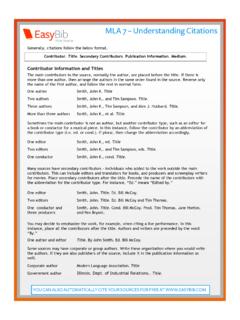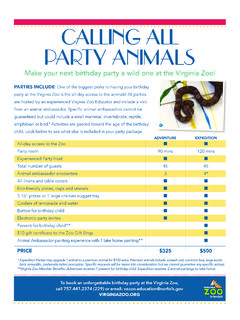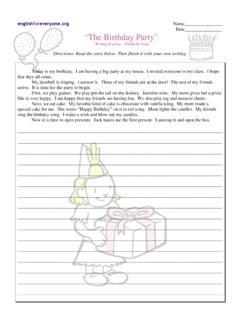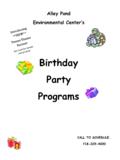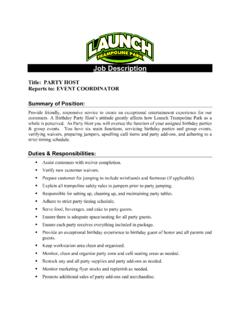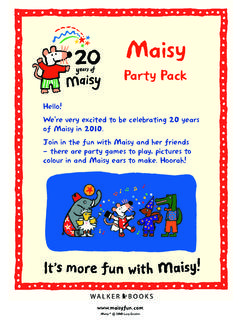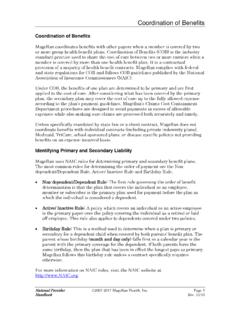Transcription of Mr. Blaber Essay/Exposition - rhsweb.org
1 Mr. Blaber Essay/Exposition Printed below is the complete text of a short story written in 1946 by Katharine Brush. Read the story carefully. Then write a 1-page response in which you identify the writer's purpose and show how the author uses literary devices to achieve this purpose. Specifically, consider the following: tone, point of view, diction, sensory details. Birthday Party They were a couple in their late thirties, and they looked unmistakably married. They sat on the banquette opposite us in a little narrow restaurant, having dinner. The man had a round, self-satisfied face, with glasses on it; the woman was fadingly pretty, in a big hat. There was nothing conspicuous about them, nothing particularly noticeable, until the end of their meal, when it suddenly became obvious that this was an Occasion in fact, the husband's birthday, and the wife had planned a little surprise for him.
2 It arrived, in the form of a small but glossy birthday cake, with one pink candle burning in the center. The headwaiter brought it in and placed it before the husband, and meanwhile the violin-and-piano orchestra played Happy Birthday to You, and the wife beamed with shy pride over her little surprise, and such few people as there were in the restaurant tried to help out with a pattering of applause. It became clear at once that help was needed, because the husband was not pleased. Instead, he was hotly embarrassed, and indignant at his wife for embarrassing him. You looked at him and you saw this and you thought, Oh, now, don't be like that! But he was like that, and as soon as the little cake had been deposited on the table, and the orchestra had finished the birthday piece, and the general attention had shifted from the man and the woman, I saw him say something to her under his breath some punishing thing, quick and curt and unkind.
3 I couldn't bear to look at the woman then, so I stared at my plate and waited for quite a long time. Not long enough, though. She was still crying when I finally glanced over there again. Crying quietly and heartbrokenly and hopelessly, all to herself, under the gay big brim of her best hat. Copyright 1946 The New Yorker. All rights reserved. Originally published in The New Yorker.
